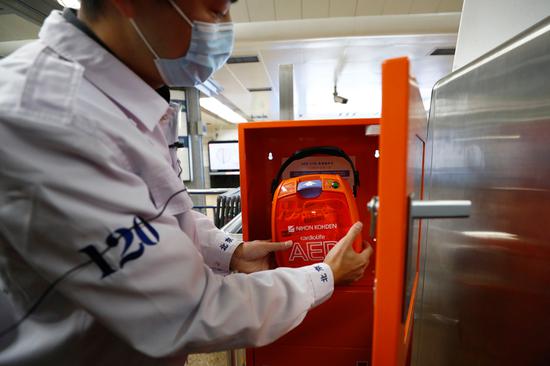U.S. economic activity in the third quarter grew at an annual rate of 33.1 percent after a sharp contraction in the previous quarter, the U.S. Commerce Department reported Thursday.
Despite the seemingly fast rebound, the U.S. economy in the third quarter was down by 2.9 percent compared with that a year ago, according to the advance estimate released by the department's Bureau of Economic Analysis.
The level of real gross domestic product (GDP) remains below its pre-pandemic peak (Q4 in 2019), where it would have been if steady growth had continued, said David Wilcox, a senior fellow at the Peterson Institute for International Economics.
"Growth would had to have been 53.3 percent in the third quarter to return the level of the GDP to its previous peak, 63.7 percent to reattain prior trend," Wilcox said, noting "still much to be done."
The economy is still about 3.5 percent smaller than it was at the end of the last year, before it was ravaged by the pandemic.
Gregory Daco, the chief U.S. economist at Oxford Economics, said on Twitter that the third quarter GDP is "record-breaking & meaningless at the same time."
Consumer spending is 3.3 percent down from the pre-pandemic level, and business investment is 4.9 percent lower, Daco noted. Exports are down by 15.3 percent and imports down by 7.1 percent.
Federal government spending is up by 2.6 percent, while state and local government spending is down 1.9 percent, he noted.
The Q3 advance was driven by a "surge" in consumer spending led by the demand for goods, and a "red-hot housing market" driven by fiscally stimulated income growth and historically low interest rates, Daco said.
The rebound in the third quarter came after the economy plunged at a revised annual rate of 31.4 percent in the second quarter amid mounting COVID-19 fallout, which has been the largest decline since the U.S. government began keeping records in 1947.
In the first quarter, the U.S. economy shrank at an annual rate of 5 percent, signaling an end to a decade-long economic expansion following the global financial crisis.
"The increase in third quarter GDP reflected continued efforts to reopen businesses and resume activities that were postponed or restricted due to COVID-19," the Bureau of Economic Analysis said.
The increase in real GDP in the third quarter reflected increases in personal consumption expenditures, private inventory investment, exports, nonresidential fixed investment, and residential fixed investment, partly offset by decreases in federal government spending and state and local government spending, the report showed.
Economists and Federal Reserve officials have repeatedly argued that more fiscal relief is needed to sustain the U.S. economic recovery, but Congress and the White House remain deadlocked over the next round of COVID-19 relief bill.
U.S. House Speaker Nancy Pelosi and Treasury Secretary Steven Mnuchin recently held a few talks, but major differences remained. With Election Day drawing close, it is unlikely for Congress to pass any relief package before voting concludes, analysts said.


















































